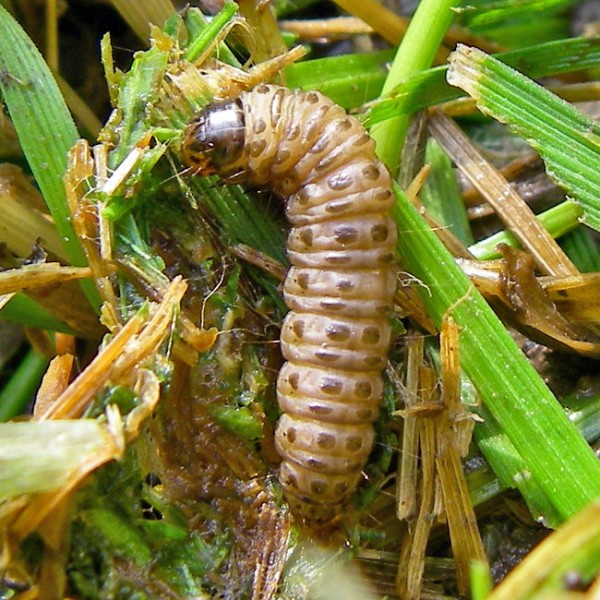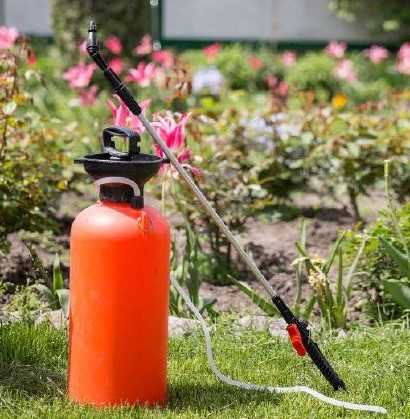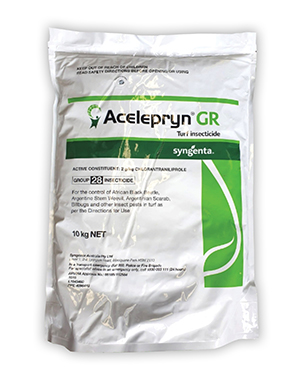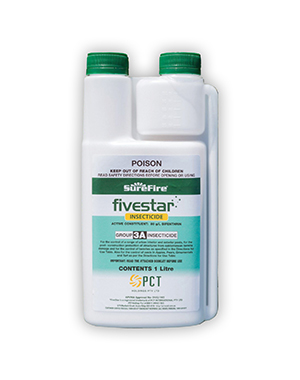How to Get Rid of Bahia Grass (Paspalum) in Your Lawn
One of the toughest grassy weeds to control in home lawns across Australia is ‘Paspalum’ (Paspalum notatum) which is an aggressive grower that’s also incredibly resilient ...

 Sod Webworms are the destructive larvae of a native moth found across warmer areas of Australia, including Queensland and parts of the Northern Territory and New South Wales.
Sod Webworms are the destructive larvae of a native moth found across warmer areas of Australia, including Queensland and parts of the Northern Territory and New South Wales.
The grey to brown moths are harmless, but can be drawn to outdoor lights at night and will drop their eggs randomly on your lawn as they fly over it from January to April.
The larvae are up to 25mm long, can be a grey, brown or greenish colour, with a brown head and a distinctive pattern of dark spots in four rows along the body.
Sod Webworms can over-winter in silk-lined tunnels in thatch or near the soil surface – where they hide during the day in summer – and will resume feeding on new lawn growth in spring.
Sod Webworm moths have a slender body, a wingspan of up to 25mm and the wings are grey with dark spots and wavy lines on both the forewings and hindwings.
They’re most active at dusk and fly just above your lawn as they drop eggs in late spring or early summer.
Depending on the temperature, the oval-shaped eggs can hatch in 7-10 days and the larvae then burrow into the thatch and hide under particles or debris, emerging at night to feed.
Sod Webworms feed on a variety of grasses, chewing leaves and stems at the crown and thinning out small areas which can become large irregular brown patches. Sod Webworms don’t usually attack grass in heavily shaded areas.
Damage may initially look like fungal disease, but closer inspection will show ragged leaf margins where the Sod Webworm larvae have been chewing.
There are two main methods of controlling Sod Webworms: manual and chemical.
Where lawn has died after Sod Webworms nipped off the leaves and stems, use a soap drench (40ml liquid soap or dishwashing detergent per 3.8 litres of water) to draw the culprits to the surface.
Collect the Sod Webworms larvae and crush or drown them in a bucket of soapy water.
Sod Webworms are most susceptible to pesticides when they’re newly hatched, which is usually in summer and early autumn.
There are several products available that will kill Sod Webworm larvae on contact, and some that act as a preventative controlling others that hatch later in the season.
Repeat treatments may be necessary.
Look for products containing the active ingredients beta-cyfluthrin, bifenthrin. esfenvelerate or chlorantraniliprole, which offers residual protection and can kill multiple generations.
 Biological control agents containing the bacterium Bacillus thuringiensis (Bt) produce a toxin that paralyses the gut of the Sod Webworms larvae. They can be applied from early spring to late summer.
Biological control agents containing the bacterium Bacillus thuringiensis (Bt) produce a toxin that paralyses the gut of the Sod Webworms larvae. They can be applied from early spring to late summer.
There are also products containing Predatory Nematodes available commercially which can be applied with a watering can, pump sprayer or knapsack.
Predatory Nematodes are safe to use around humans and pets and won’t harm Bees or contaminate groundwater.
They’re usually effective within 48 hours but are best applied late at night to avoid exposure to sunlight – which kills nematodes within minutes – and target Sod Webworms when they’re actively feeding.
Always read the safety directions and instructions on the product label before use.

Acelepryn GR 10kg Bag provides unmatched granular seasonal control against seasonal Long Grub and Caterpillar control in one single application. Acelepryn GR 10kg is suitable for Zoysia, Kikuyu, Couch and Buffalo grasses. Always read the safety directions and instructions on the product label before use.
SHOP NOW
Fivestar 1L is a specialised insecticide designed with a low odour active ingredient of bifenthrin and offers superior control of insect pests. Fivestar 1L is suitable for Zoysia, Kikuyu, Couch and Buffalo grasses. Always read the safety directions and instructions on the product label before use.
SHOP NOWA healthy lawn is better equipped to quickly recover from mild pest infestations such as from Sod Webworms. Help your lawn recover by watering and feeding appropriately and avoid causing stress to your lawn by mowing it too short.
Sod Webworms are a pest of warm season turf grasses, including Couch, Kikuyu, Buffalo and Carpet Grass.
Regular monitoring can help prevent a major outbreak that will cause more damage to your lawn and be much harder to address.